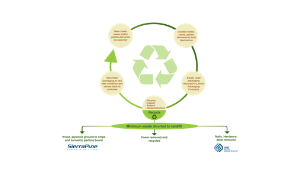Environmental Stewardship – Recycling Wooden Packaging
29 September 2014

The need for environmental stewardship has never been more urgent. At, Larson Packaging Company we are constantly working to combine customer savings and service with smart, green packaging solutions. We accomplish this by implementing “best practices” for green management and making critical choices throughout the entire packaging cycle. We start by purchasing materials that will stand up well during shipping and can also provide additional value through recycling and reuse.
» Read More Wood Crates & Packaging: Balancing Cost & Quality
Retrieval and recovery systems exemplify the meaning of win/win solutions for business. They provide the opportunity to lower costs while employing green management strategies. Recent market research shows that one out of every five wood packaging users currently use, or plans to use, a packaging retrieval and recovery system. This increased use is probably indicative of two trends: a change in attitude toward the environment and the convenience of solving certain waste disposal problems. According to this study, the number of users of closed-loop packaging systems is up 300% in just two years and is projected to keep growing.
While many companies may choose to recycle crates and packaging in house, others may find it more convenient and cost effective to engage third parties like Larson Packaging Company. Please contact us to discuss your company’s packaging and recycling needs.
» Read More Larson Packaging Company: Your Professional Partner
Wood Recycling FAQs
What is the purpose of wood reuse, recovery, and recycling?
As consumers and stewards of forest resources, we have an interest in facilitating and encouraging the recovery of scrap wood to conserve natural resources and expand the fiber supply.
What are the environmental benefits of recovering wood?
Wood recovery has many environmental benefits, including:
-
Expanding and extending the life of the wood fiber supply
-
Contributing to carbon storage
-
Reducing the amount of recoverable wood going to landfills
-
Contributing to the development of technologies utilizing a variety
of recoverable wood fibers.
How much wood is recovered?
While data on recovered wood is incomplete, the USDA Forest Products Lab estimates that in 1998 about 132 million tons, or around 80%, of used and scrap wood was recovered, used for energy, or unusable. This includes only waste wood generated from the municipal, construction and demolition, and primary timber processing waste streams.
How much wood is available for recovery and recycling?
The USDA Forest Products Lab estimates that in 1998,over 30 million tons were available for recovery from the municipal, construction and demolition, and primary timber processing waste streams.
What products are made from used or scrap wood?
Recovered wood is used for products you use everyday, from living room furniture to home construction. Recovered wood is used to make engineered wood products and composites (largely for furniture and construction), mulch, compost, energy, and for many other consumer goods.
What are sources for used and scrap wood?
Most used and scrap wood in the municipal solid waste stream is from woody yard trimmings and other wood waste. Scrap wood is also generated in the construction and demolition industries. Demolition of homes and other structures is an increasing source of used wood. Wooden pallets are another source of used wood, although over one third is recycled into new pallets. Land clearing for highways and other projects, as well as primary timber processing provide additional sources.
Who can accept used wood for recovery and recycling?
If you’re in the Bay Area, Larson Packaging Company can recycle your used pallets. When your pallets have met their life expectancy or don’t fit your operations anymore, we can recycle them into a variety of practical by-products such as, landscape mulch, wood fiber composite material, insulation, hog fuel chips, wood fiber fuel for heating & electricity, and home building materials. In addition, The American Forest & Paper Association’s online Wood Recovery Directory and the National Wood Recycling Directory, contain over 700 market contacts for recycling scrap wood. These directories make it possible for businesses and communities that have recoverable wood to connect with processors that can accept it as raw material for new products. To include your business in the directory, simply add it online.
Special thanks to the American Forest & Paper Association for the content on this page.
{{cta(‘1b96b388-a763-49bf-8bb3-86f9fe58e68a’)}}
